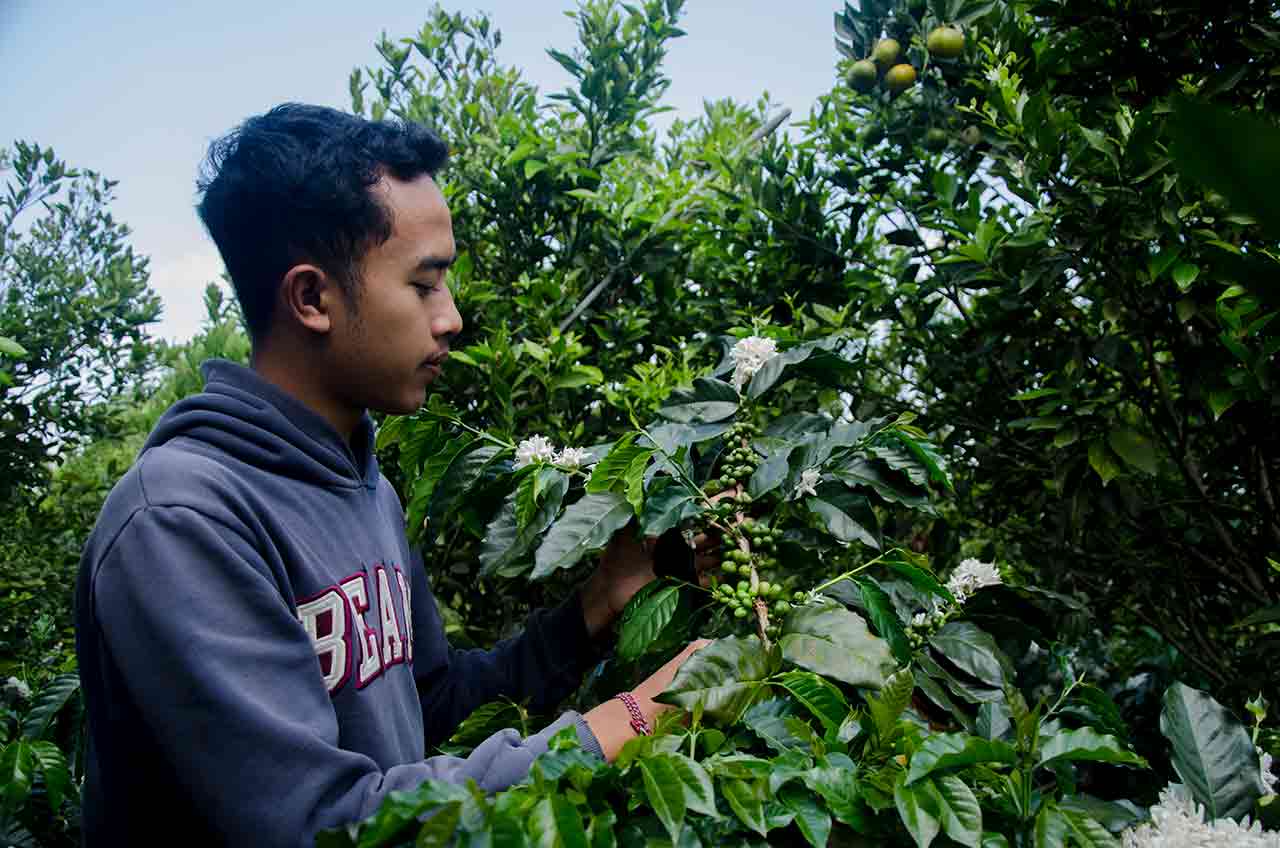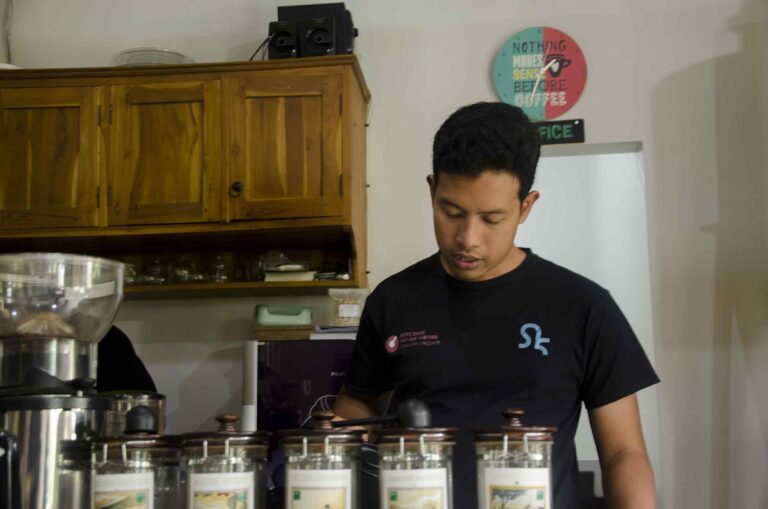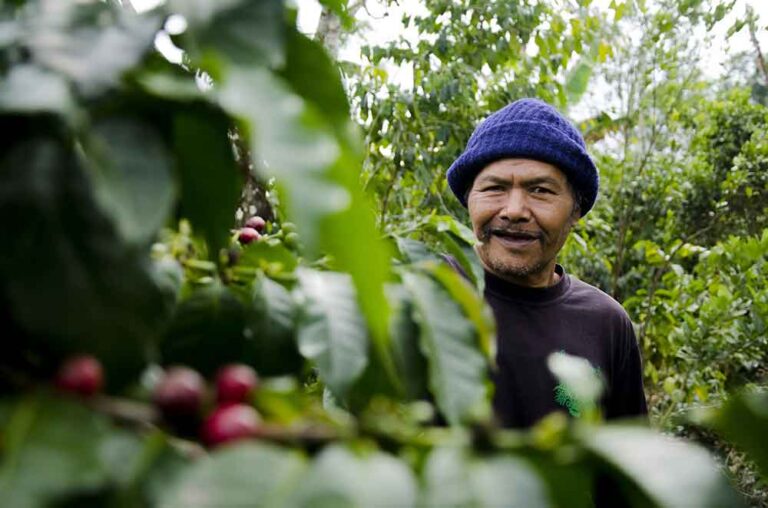Have you ever played in a coffee plantation? When the coffee flowers are blooming? The fragrance is fragrant like jasmine flowers that gently flow to soothe the soul. Let’s enjoy the atmosphere of the coffee plantation with Wana Prastha.
Early in the morning Sang Putu Wana Prastha, usually called Wana, was checking the coffee plantation behind the house. The 1 hectare land is planted with oranges interspersed with coffee plants.
Orange fruits hang in bunches, still green, not yet ready to be harvested. Meanwhile the coffee trees are decorated with white flowers, spreading the fragrance of jasmine across the garden.
“This year, coffee has flowered several times. Unlike last year, the fruit hasn’t had time to catch the rain yet,” said Wana while examining the coffee flowers that decorated the branches.
But he is not sure that the frequent flowering of coffee will produce a big harvest this year. In contrast to the previous two years, the number of coffee harvests fell because the flowers fell off due to prolonged rain. However, even though the dry season is quite long in 2023, coffee flowers are quite reluctant to become fruit because there is not enough rain to help pollination.
“There may not be a big harvest this year. It looks like the harvest is progressing into February but will last a bit longer until August. “The harvest will be small,” he said, expressing his suspicions.
After checking the coffee plants, Wana moved to the green house, the coffee cherry drying room. Cherry grains can be seen spread out on top of the tiered ram net in 3 long rows. The room was covered in white, slightly transparent plastic to trap the sun’s heat.
He turned it over with the palm of his hand to check how dry the naturally processed coffee cherries were. Wana picked up one and put it in his mouth. Without hesitation, he chewed the dried cherry with a crunchy popping sound.
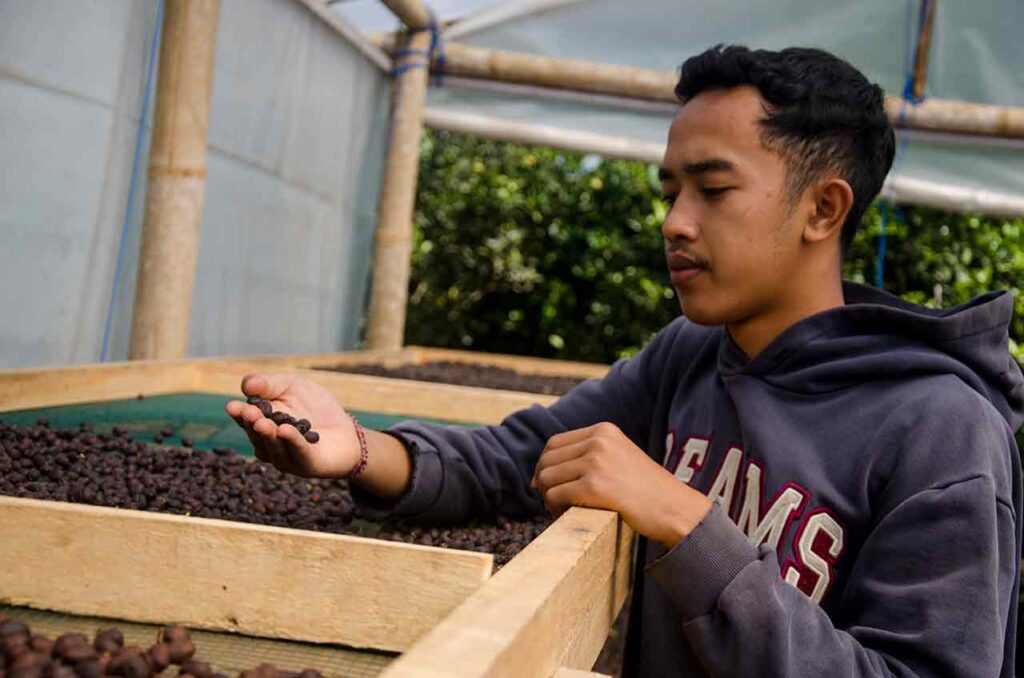
Wana, a young man born on December 11 2002 in Gunungbau Village, Kintamani, struggles with coffee every day. His father, Sang Kompiyang, has been processing Arabica coffee since 2011. It is not surprising that Wana is very familiar with the coffee plant and the intricacies of its processing.
Having graduated from High School in 2019, Wana chose not to continue his education to college. He wants to learn more about the world of coffee by going directly and learning from coffee practitioners.
Mr. Eko Purnomowidi, his father’s partner, is a coffee master who founded the Classic Beans Cooperative from Bandung, West Java. Wana can study and practice directly at Mr. Eko’s place.
However, the Covid-19 pandemic disrupted that plan. Wana couldn’t go to Bandung.
Even so, he didn’t want to keep quiet. When the situation is under control, Wana decided to study to become a barista at a training center in Denpasar, Bali. The important thing is that he can add new insights, not only about coffee plantations.
Studying in Denpasar for 2 months, he was recruited by one of his trainer, who happened to be the manager of a coffee shop in Ubud, to become a barista there. After about a year of working, he had to leave his workplace and return to the village because he had to help his father process coffee.
In the main harvest season, they will be very busy receiving shipments of coffee cherries from farmers. There are at least 400 farmers who sell their coffee cherries every harvest. In total throughout the harvest season, up to 600 tons of coffee cherries must be processed.
“In a year, 3 months during harvest, a total of 100 tons of green beans can be produced,” said Wana, describing how busy his father’s coffee processing was.

The sun began to rise. The air in the greenhouse is getting hotter. Wana invited me to move to the roastery room which was in the building right next to the drying room.
“Come on, let’s chat over coffee!” he asked.
A roasting machine occupies a corner of the room. A small table is in another corner. At that table Wana made a v60 brew. He uses coffee beans which he processes using the Mosto Washed method with anaerobic fermentation. One of the coffee processes method he learned from his interactions with coffee lovers community.
“The aim of Mosto washed is to make the coffee flavor more complex and intense. “It’s not like full washed which is simpler,” he explained.
Wana looks deft at brewing coffee. His experience working as a barista is still embedded in his motoric muscle memory. We enjoyed the fresh and delicious brewed coffee while continuing to chat.
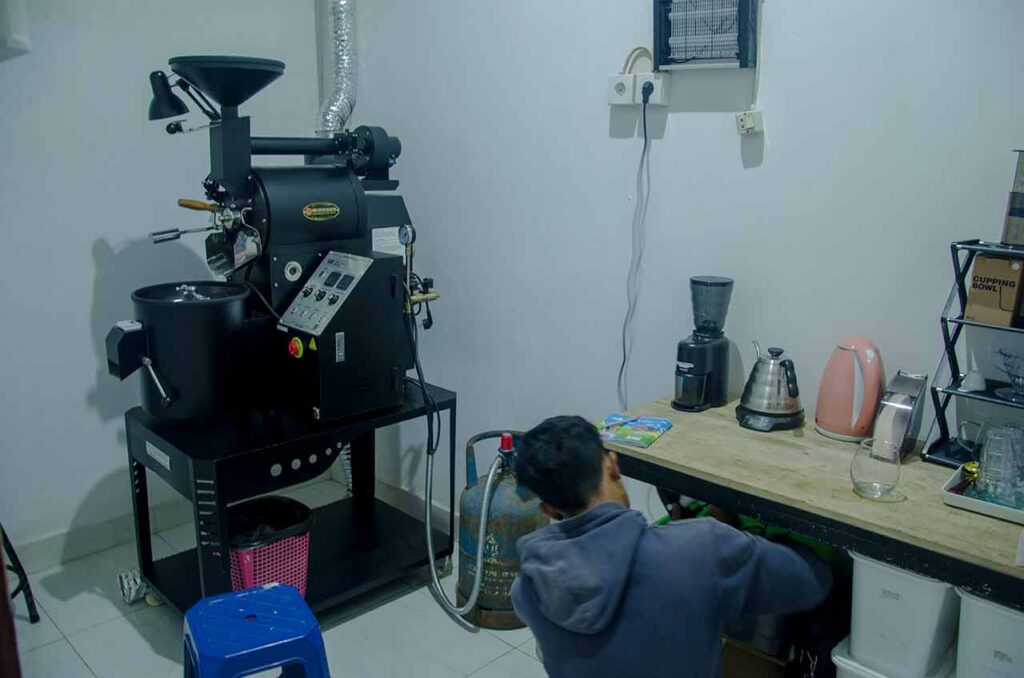
Like other young people his age, Wana Prastha is a digital native generation. According to his passion, he found many friends and coffee communities through social media.
“I make many friends with coffee lovers from Bandung. “They like to share knowledge which seems to never end,” said Wana.
These virtual world interactions have further widened Wana’s horizons in the world of coffee.
After the harvest, Wana returned to work at the Ubud coffee shop. Working as a barista allowed him to meet many people. Wana sees coffee as a link that unites people from various backgrounds.
He began to diligently experiment with coffee processing, from post-harvest handling, drying, fermentation and roasting. He learned to roast coffee beans himself using discussions with his online community colleagues.
He posted the results of his experiment on social media Instagram. He did not hesitate to share the green beans from his trials with several interested roasters. Not much, just one or two kilograms. Wana is very happy to get feedback from them.
The response from the roasters was followed up with new trials to perfect the results. Not in vain, there has been very significant progress. Of course this further stimulated his enthusiasm.
However, the road is not always smooth. After the busy harvest period, he returned to work at the Ubud coffee shop. However, just one day after starting work, Wana was forced to stop again due to an accident.
Misfortune sometimes cannot be avoided. After work, he practiced operating the roasting machine. Maybe he was still tired, he couldn’t really maintain concentration. The flames from the heating stove grabbed his face. The burns made the whole face black.
“I was treated with ointment. “I shouldn’t be exposed to the sun for a month, so that my face won’t be streaked,” Wana recalled the accident.
But, that didn’t stop him from loving coffee. After a month of rest while healing, Wana Prastha worked again as a barista at a café in the Penelokan area, Kintamani.
Not too long, about four months there, he had to return to his father’s coffee processing because the coffee harvest season had arrived.
Since then he decided to no longer work as a barista, but chose to focus on processing specialty coffee.
Currently, Wana Prastha has collaborated with five coffee farmers who already have the knowledge to produce specialty coffee. Of the five, Wana can produce 3 tons of specialty green beans.
Wana Prastha continues to prepare to take part in the coffee competition. He is targeting the Cup of Excellence (COE) competition in 2024. He hopes that from the COE competition, his processed green beans can get a good ranking and be auctioned at a high price.
Apart from making Bali coffee better known, coffee farmers in Kintamani will be more confident and enthusiastic about practicing good coffee farming. Starting from 5 farmers, it will gradually increase. Because coffee gardening can provide very promising results. The universe always has a way of supporting good initiatives.
Follow Wana at Instagram @curtinacoffee

